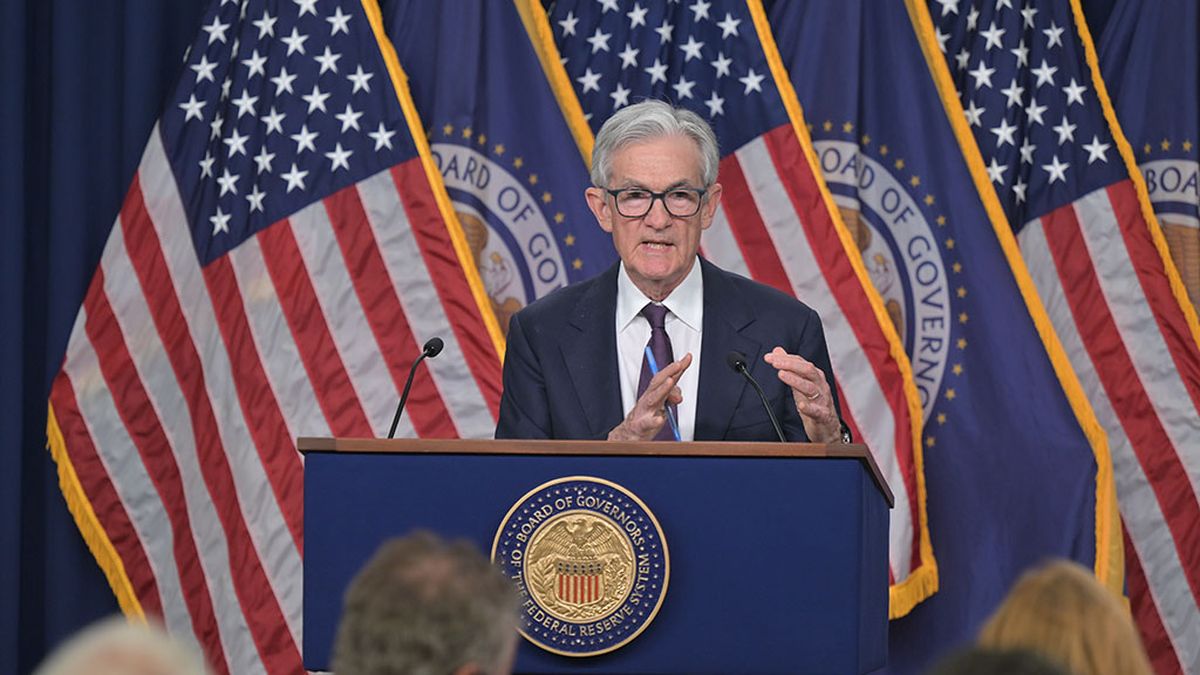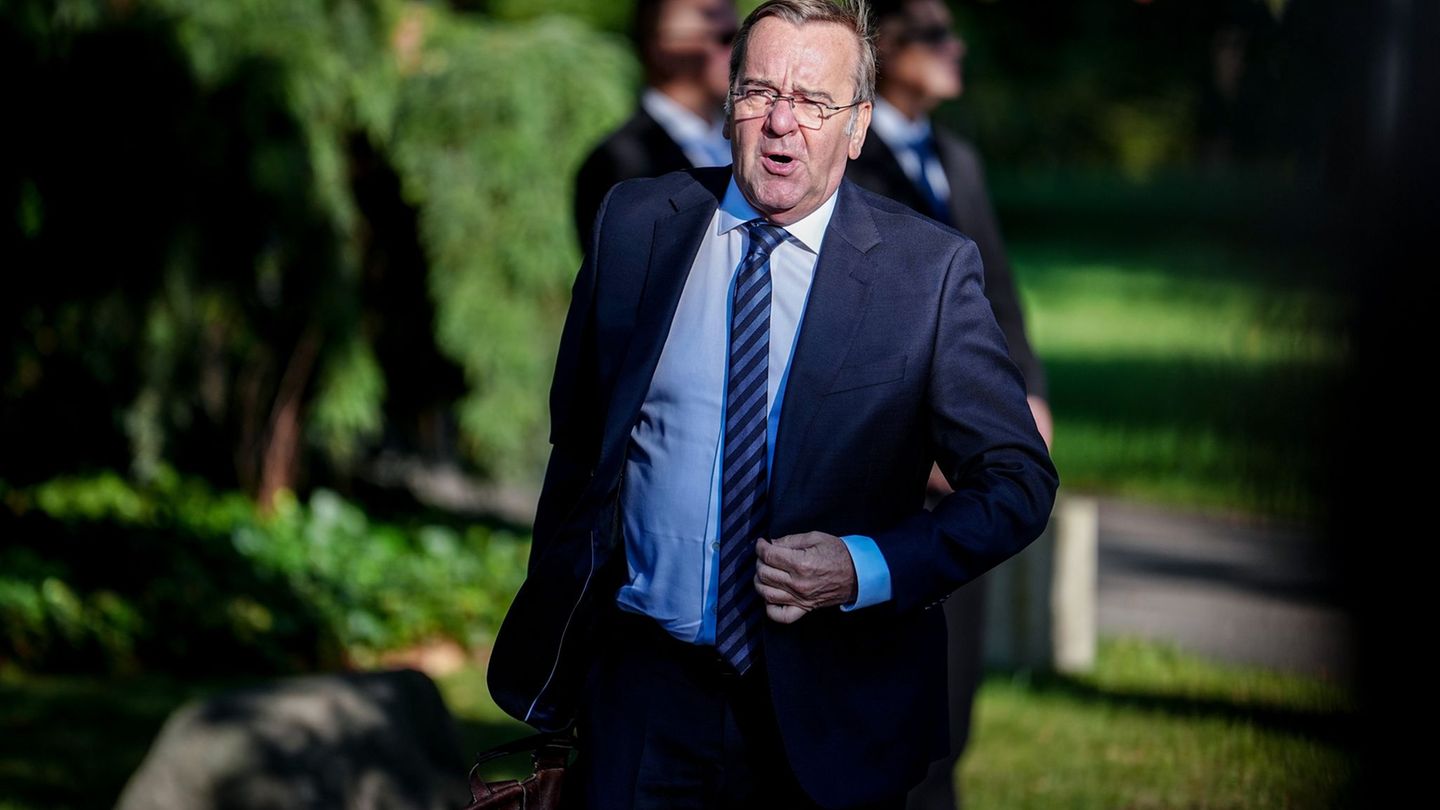The head of the Fed, Jerome Powell, in his speech by Jackson Hole said he could consider reducing rates in mid -September.
The president of the Fed, Jerome Powellshe took advantage of the privileged attention that concises the annual symposium of Jackson Hole. And on his last official visit there, and tacit farewell, he poured a clear message for an eager hearing of definitions. Despite the persistent rise in inflation, the Central Bank could consider a reduction in interest rates at its next September 16 and 17 meeting. Even when the entity expects the march of prices – bullowed by the rise of tariffs – it will move away even more than the goal of 2% by arriming again to 3%. Tasas pruning is not a decision taken, but it is a possible alternative. And, depending on the basic perspectives that the Fed and the “Changing risk balance” that faces, is a direction that may be needed soon. And that it can be adopted shortly since the Fed estimates that today the monetary policy operates in restrictive mode.
The content you want to access is exclusive to subscribers.
Wall Street responded with algarabía to the measured words, and very calculated by Powell. He said nothing that the markets did not know. The specific decision will only be taken after knowing the fate of the inflation and employment of August. It was rather what he did not say what alleviated them. Although other official spokesmen, Beth Hammack of Cleveland’s Fed and Susan Collins from Boston’s, Transcartón appeared to emphasize it. Collins remarked that the Central Bank is willing to consider all options. Under no point of view, rates drop should be seen as an consummated fact. Hammack was frontal and grain: “My attention is fully focused on inflation. We are failing very significantly in your control”. That choreography with cast actors finished completing the message.


What expected Wall Street
Wall Street interpreted it as follows: The rates is falling. The S&P 500 index climbed 1.5%. The Dow Jones Industrial and the Nasdaq, 1.9%. His attention immediately passed by Jackson Hole to focus on not staying out of a rally that warmed his engines for the umpteenth time. And the doubts about the bonanza of artificial intelligence and its huge investments (of uncertain recovery) that they percinrated throughout the week? And the fears for the record valuations of the companies? The aspirin that hinted Powell stole the prominence. And so the last ones could finally be the first.
The highest risk actions, and those that militate in the platoon of the laggards, rose more than the usual stars. The Russell 2000, the basket of shares of small companies, advanced 3.8% on Friday. The ETF funds dedicated to construction – a highly sensitive item to the avatars of the interest rate – resurrected more than 5%, from the oxtratumba, like who sees light at the end of the tunnel. A single sector retreated: basic consumption (-0.4%), a defensive segment by nature. And the rising actions exceeded those who registered falls in a proportion close to 10 to 1 in the New York Stock Exchange and greater than 5 to 1 in the Nasdaq. This was not the celebration of a few.
At the July monetary policy meeting, two governors – Chris Waller and Michelle Bowman – advocated a quarter cord cutting. They soft arguments that Powell now detailed with neatness. The motion did not prosper. Three weeks ago, the remaining nine votes – led by Powell – preferred not to innovate. The discrepancy did not dissolve in the debate, as is usually custom. And left it expressly settled in writing. These are times of high political (and frenzy in the renewal of authorities). Why could the decision change in September? Because two days later, with the work part of July, crucial information was known. The monthly employment creation was reduced to 35 thousand net positions the last quarter vis à vis the 168 thousand (average) last year. It is true: the job offer also slowed and that is why the unemployment rate remains stable between 4% and 4.2% since May 2024. It is understood: it is a threshold of full employment, not an emergency zone. However, in this “curious balance” that is sustained by the mutual deceleration of the supply and demand of workers, the risks of the labor market being increased. If these risks materialize, Powell admitted (and before him, the dissidents Waller and Bowman), the situation is likely to deteriorate quickly. An outcome with a strong increase in layoffs – and a jump from unemployment – cannot be ruled out.
The Trumponomics 2.0 imposed since January a stagning shock – in successive irregular installments – which complicates the execution of the Fed tasks. Monetary policy is thrown by faced risks. The one of a sudden and drastic cooling of employment and activity, on the one hand, and, in the opposite path, the parallel reheating of inflation (which since 2021 orbits above the goal of 2%). The limitations of the toolbox are known: it has a single instrument – short -term rates – both for navigation and for accident prevention. In parallel, its independence suffers the suffocating siege of President Trump, whose personal participation in monetary policy discussions (from La Tribuna) is a distinctive seal. As President Nixon did in the early 70s in the prelude to the famous Stagflation.
Powell did not speak in Jackson Hole, and Trump already demanded the resignation of the governor Lisa Cookconveniently accused of irregularities in the processing of a pair of mortgages, personal, William pultethe head of the Federal Housing Financing Agency. Another governor, Adriana Kuglerhe excused himself from participating in the last meeting of the Fed and a couple of days later he presented his resignation. Trump will place Stephen lookwho today regent the Economic Council of Advisors of the White House (prior approval of the Senate). Cook warned that he will resist in his position and will not be intimidated. He will do as Powell whom Trump already warned him to analyze a cause for the costs of spare parts in the historical buildings of the Fed. The president wants the Fed Found rate of 4.5% to 1% in the shortest possible time. And he knows that he will not get much with the current cast of the Fed. Powell’s mandate expires in May and will not be renewed. But haste is much superior.
Far from giving up its goal, Trump will insist on changing the cast and using fiscal policy as an antidote of monetary policy. That is the function of Scott Besent in charge of the treasure. This veteran coin trader implemented an inverse engineering strategy that reproduces the credit effects of an expansion of the Fed balance sheet. By the way of not swelling bond emissions – despite the increase in fiscal deficit – and to reduce its volume in circulation through systematic repurchases (which absorbs duration), the administration managed to anesthetize from June any adverse reaction of long rates. He annulled the zeal of the so -called “vigilant Bond” who no longer monitor the detours of inflation as they did before. But to finance the deficit and scrub the treasure debt – appealing to an increasing use of short -term letters – a besent urges that the Fed lowers the rates and that it does it generously.
Jay Powell’s word
Powell was clear: the FED discounts a horse rising inflation from the tariff crusade promoted by President Trump. And he no longer has the collaboration of long rates in the containment task. Is there then margin to lower the rates? Yes. Monetary policy is restrictive. It can be relaxed on the margin without being astringent. The Fed Funds rate is 4.5%. The neutral rate – an estimated, not observable variable – around 3%. Powell judges that nucleus inflation – measured by the deflator of personal consumption – will rise to 2.9% in July. As the Fed warns a move in the risks balance – with the “curious balance” of the labor market gaining relevance in its radar – the loss of fees may be needed. And it can be adopted if inflation expectations, as until now, remain impassive and well anchored.
This is a chewed decision, which could be managed without tensions or outbursts, which is another sensitive aspect that Powell will want to preserve until he finishes his mandate. In September, even unanimously. What could twist this destination that Chicago’s futures judged almost a certainty a week ago and on Friday, after Jackson Hole, they see 85% likely? A sharp jump from August inflation; Especially, if the long rates break the invisible fence that reveals to the treasure. If Powell depends, that is, if there is no successful riot on board, the Fed, in that case, will remain with crossed arms.
Without another destination since going home, the only satisfaction that Powell can take with him is to have worked conscientiously according to his loyal knowledge and understand. If Nixon is the mirror to look, it will not want to appear there in the unfortunate role of a new Arthur Burns. In 2022 he was close to emulating it when, at the request of mitigating the effects of COVID, inflation shot over 7%. But the story was reversed shortly after with the success of a soft landing to what Paul Volckerbut without even the trauma of a slight recession. Trump will not let you conduct inflation back to the 2%fold. You can’t aspire to everything. Of course, also in Jackson Hole, he ratified the validity of the inflation goal by 2%, as strict value and not as average. If that was a mistake, he also corrected him.
Source: Ambito




